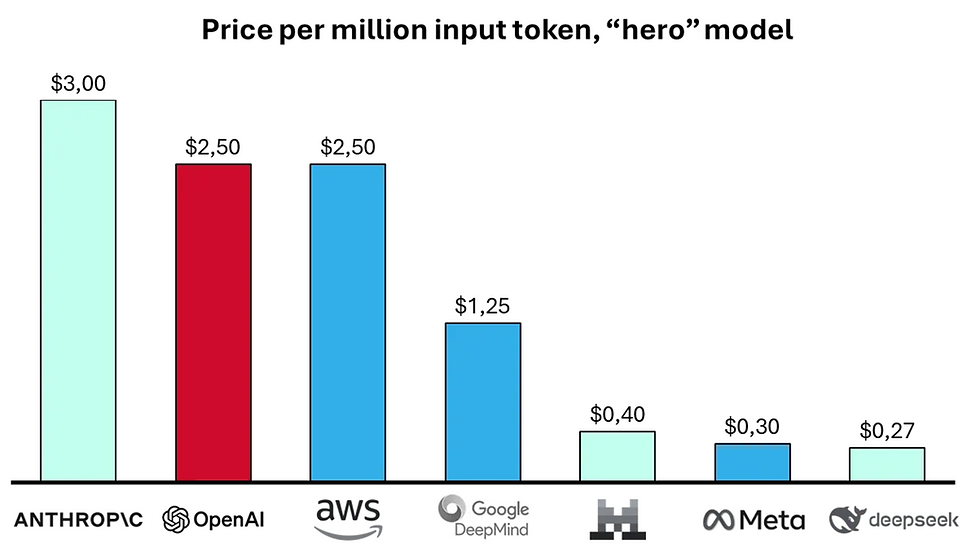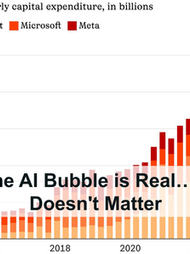Amazon Go is not the Future of Retail
- Adrien Book

- Jun 30, 2019
- 6 min read
Updated: Jan 13, 2021
“If you want to glimpse the future of retail, check out an Amazon Go store”. Go home CNN, you're drunk. The future of retail is not Amazon go, nor is it cashierless stores. Instead, all retail trends point to the store of the future using a wide array of different technologies to deliver real added value to customers.
The idea behind Amazon GO is theoretically simple : customers download an app (there’s always an app), link it to a credit card, generate a unique code and present it at the shop’s entrance. Once the turnstiles open, they are free to shop, unbothered by human interactions; cameras follow them around, tracking what is picked up using computer vision algorithms, and smart shelves equipped with a variety of sensors confirm what the cameras “see”. The items are added to a virtual basket, and clients are automatically charged as they exit the store.
This description should be enough to understand the gist of what comes below, but more basic information can be gathered from the following video if you’re more of a visual learner. This cashierless idea has made a lot of wave in the retailing world over the past two years. And why shouldn’t it? At face value, automating one of the most staff-heavy store operation appears to be a grand idea : when checkout is done automatically, employees may have more time to upsell, pick up online orders and answer customer queries. Furthermore, wages have been rising and stores are having to cope with slim margins, partly due to online shopping; letting go of some staff could sound like a grand idea for a retailer down on its luck.
Computer vision could also mean automatic inventory (also a huge plus when looking to reduce “costs”/people), less theft ($34 billion in lost sales worldwide in 2017) and more space available to increase revenue per square meter.
Finally, 2019 obliges me to mention that computer vision gives us access to more sweet, sweet data : customers are not only linked to a name and account to track what they buy, but also visually followed around to track what they do NOT buy (what they stare at, what they pick up and put back…). That’d shine a light on 80% of the purchasing process, which until now has been a bit of a black box (unless people were sent around with pencils to follow shoppers around and write down what they witnessed — yes, this still happens).
This all makes for a pretty compelling argument in favour of an Amazon GO-style store if you’re a retailer. However, I hope to prove that this specific technology will only work for Amazon (3,000 such stores within the next two years, anyone?), and no other company.
Size matters
What works in small concept stores might (will) not work in larger ones with heavier foot-traffic. Firstly because large crowds have been known to make cameras glitch (as well as the shelves sensors by taking things and putting them back in random places — animals), and secondly because large stores mean a wider selection of products; Amazon GOs have about 1,000 items (or SKUs) in stock, while most grocers have around 80,000.
Most computer visions software have a 98% accuracy over a couple thousand of items. That means that if 20% of a store’s selection is picked up on any given day in an Amazon GO, there are about 4 mistakes per day per store. Using the same logic, there’d be 320 mistakes per store per day if supermarkets were to implement the solution as it is. That’s 320 clients per day that are more likely to switch to another shop (it’s a fluid industry), which is not great for any store, big or small. And that’s not even taking into account the fact that mistakes are exponential for computer vision algorithms.
There are simply too many items that look too similar in large store : even I can’t see the difference between an 80g and a 120g pack of chips. While Amazon made sure it’s offering is easily identifiable, Walmart will never be able to do so on such a large scale.
The environment matters
Computer vision relies on packaging to identify products. Specifically, a mix of printed shapes to make recognition easier. However, I seem to recall that retailers are currently bending over backwards to reduce packaging, and rightly so (save the turtle, y’all). Innovation is great, but it does not exist in a vacuum.
Furthermore, a lot of products cannot be packaged in such ways, such as loose fruits, or deli food, further complicating the matter for grocers.
Finally, we would also have to remove all soft fabric from the equation (too flowy-floppy), which rules out fashion stores from using this specific mix of technology.
Retrograding matters
Most retailers simply do not have the money to rebuild a store from scratch. That means retrograding whatever space they have to fit a new process. In the case of installing computer vision cameras and smart shelves, this would mean :
Buying enough cameras to cover the whole store and destroying the existing ceiling to rebuild one that can take the weight of that amount of hardware.
For cameras to see everything, there can be nothing obscuring their view. That means shopping carts become an inconvenience, as do marketing furniture appreciated by manufacturers to advertise their wares. Goodbye sweet promos.
Investing in brighter lights to make “seeing” easier.
Investing in new AC systems : so many cameras will create a lot of heat.
Invest in new shelves.
Even assuming the algorithms are magically free, the original Amazon Go in downtown Seattle required more than $1 million in hardware alone. That’s way too much for an industry working on increasing margins.
Cash matters
Most countries still rely heavily on cash for a variety of reasons (looking at you, Germany). As such, a variety of laws are likely to be passed in the near future to ensure cash is taken by all stores, lest discrimination becomes rampant. After all, a LOT of people still don’t have a smartphone, and those are the people that might need a grocery store most. That wouldn’t be “stiffing innovation” (damn Luddites), it’d be the government doing its job.
One of the many reasons customers continue to use cash is simply because it gives them a hint of privacy. Amazon claims that it only keeps purchasing and video data just long enough to provide you with an accurate receipt, while only a small subset of the info is retained to further train the algorithms, but anyone who knows how Bezos operates knows that it’s bull : training and improving an algorithm of this nature requires an exponential amount of data.
Yes, we’d trade our privacy without a second thought for an Amazon Prime discount (well, a discount and the ability to walk out of the store without having to say “thank you” to a human), but old-school retailers have a lot less to offer in exchange for abandoning large swathes of privacy.
Labour costs matter
Automating tasks means reducing the workforce, and making more profits, right ? Well, only only kind of : firing cashiers is cheap, but hiring data scientists is expensive. A lot more expensive. And even if a company decides to buy the algorithm instead of creating it, upkeep would still be a major cost, as well as further training and “probability tinkering”.
That’s what happens when you’re too eager to cut costs. Costs start to cut you.
And please do not use this to argue that new technology creates as much jobs as it destroys. There are 3.4 million cashiers in the U.S. We’re not training that many data scientists. Wake up and smell riots.
Conclusions matter
So. We’re talking about a retail technology that cannot be used for groceries, fashion, or in large stores. But it’s good for snacks, as Amazon noticed (Water and gummy-bears being among the best-selling items). It will also soon have to take cash.
Mmhm...
Cash for snacks…
Hey I know this one!
Basically, Amazon GO is a glorified, incredibly expensive vending machine.
Broadly speaking, innovation should either cut costs or drastically benefit the customer (remember the RFID hype? Of course not, because survivorship bias is a hell of a drug). Amazon GO does neither. Sure, the tech will live on because it’s fantastic. But the stores will never materialise for any other brand, unless MASSIVELY scaled, with huge cash backing, the likes of which only Amazon has access to.
That’s simple economics.
Additionally, Jeff Bezos was never one to let economics ruin a good time, especially if a new venture happens to be a great place to put profit from other areas of his business to pay less on taxes.
Amazon doesn’t want to make money off the store. It wants data to feed the beast. We just won’t be laughing as much when Amazon is using biometrics instead of a mobile code and app and selling that data to your insurance company.



























Click here provide members with discounts on over-the-counter medications, vitamins, and health essentials, promoting better health management and cost-effective wellness solutions. kaiserotcbenefits.com - more details here
Click here help you find recent death notices, providing information about funeral services, memorials, and tributes for loved ones in your area. obituariesnearme.com - more details here
Click here? Many users have had mixed experiences with the platform, so it's important to read reviews and verify deals before booking. istravelurolegit.com - more details here
무료카지노 무료카지노;
무료카지노 무료카지노;
google 优化 seo技术+jingcheng-seo.com+秒收录;
Fortune Tiger Fortune Tiger;
Fortune Tiger Fortune Tiger;
Fortune Tiger Slots Fortune…
站群/ 站群
gamesimes gamesimes;
03topgame 03topgame
EPS Machine EPS Cutting…
EPS Machine EPS and…
EPP Machine EPP Shape…
Fortune Tiger Fortune Tiger;
EPS Machine EPS and…
betwin betwin;
777 777;
slots slots;
Fortune Tiger Fortune Tiger;
google 优化 seo技术+jingcheng-seo.com+秒收录;
谷歌seo优化 谷歌SEO优化+外链发布+权重提升;
Fortune Tiger Fortune Tiger;
Fortune Tiger Fortune Tiger;
Fortune Tiger Fortune Tiger;
Fortune Tiger Slots Fortune…
gamesimes gamesimes;
站群/ 站群
03topgame 03topgame
betwin betwin;
777 777;
slots slots;
Fortune Tiger Fortune Tiger;
google seo google seo技术飞机TG-cheng716051;
03topgame 03topgame
Jogos JOGOS
Fortune Tiger Fortune Tiger;
Fortune Tiger Slots Fortune Tiger…
Fortune Tiger Fortune Tiger;
EPS машины EPS машины;
Fortune Tiger Fortune Tiger;
EPS Machine EPS Cutting Machine;
EPS Machine EPS and EPP…
EPP Machine EPP Shape Moulding…
EPS Machine EPS and EPP…
EPTU Machine ETPU Moulding Machine
EPS Machine EPS Cutting Machine;
Fortune Tiger Fortune Tiger;
Fortune Tiger Fortune Tiger;
Fortune Tiger Fortune Tiger;
Fortune Tiger Fortune Tiger;
Fortune Tiger Fortune Tiger;
Fortune Tiger Fortune Tiger;
Fortune Tiger Fortune Tiger;
Fortune Tiger Fortune Tiger;
Fortune Tiger Fortune Tiger;
Fortune Tiger Fortune Tiger;
Fortune Tiger Slots Fortune…
Fortune Tiger Slots Fortune…
Fortune Tiger Slots Fortune…
google seo google seo技术+飞机TG+cheng716051;